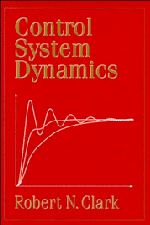Book contents
- Frontmatter
- Contents
- Preface
- 1 Introduction to Control System Engineering
- 2 Mathematical Models of Mechanical Systems
- 3 Mathematical Models of Electrical Systems
- 4 Mathematical Models of Electromechanical and Electrohydraulic Systems
- 5 Summary of Modeling Principles for Physical Systems
- 6 Solution to the Initial-Value Problem
- 7 Pole-Zero Methods of Analysis for Single-Input-Single-Output Systems
- 8 Automatic Feedback Control
- 9 Dynamic Analysis of Feedback Control Systems
- 10 Design of Feedback Control Systems
- 11 Frequency Response Analysis of Linear Systems
- 12 Stability Analysis by Nyquist's Criterion
- 13 Dynamic Analysis of Feedback Systems by Frequency Response Methods
- 14 Design of Feedback Systems by Frequency Response Methods
- 15 Advanced Topics
- Appendices
- Answers to Problems
- Bibliography
- Index
5 - Summary of Modeling Principles for Physical Systems
Published online by Cambridge University Press: 05 June 2012
- Frontmatter
- Contents
- Preface
- 1 Introduction to Control System Engineering
- 2 Mathematical Models of Mechanical Systems
- 3 Mathematical Models of Electrical Systems
- 4 Mathematical Models of Electromechanical and Electrohydraulic Systems
- 5 Summary of Modeling Principles for Physical Systems
- 6 Solution to the Initial-Value Problem
- 7 Pole-Zero Methods of Analysis for Single-Input-Single-Output Systems
- 8 Automatic Feedback Control
- 9 Dynamic Analysis of Feedback Control Systems
- 10 Design of Feedback Control Systems
- 11 Frequency Response Analysis of Linear Systems
- 12 Stability Analysis by Nyquist's Criterion
- 13 Dynamic Analysis of Feedback Systems by Frequency Response Methods
- 14 Design of Feedback Systems by Frequency Response Methods
- 15 Advanced Topics
- Appendices
- Answers to Problems
- Bibliography
- Index
Summary
Introduction
In the type of dynamic system analysis that concerns us here, we normally identify the input quantity (or quantities) and the system state variables as our first step. We then write the differential equation (or equations) that describe the relationships between the input variables, the state variables, and their derivatives. The process of establishing these equations requires an understanding of the physical principles that govern the dynamics of our system. We have seen in the first four chapters that the principles of mechanics (the laws of Newton and Euler), those of electromechanics (the laws of Faraday, Ampere, Ohm, and others), and those of fluid mechanics, including aerodynamics, are all basic to the systems of interest here. The equations that result are generally nonlinear, ordinary, differential equations. In our work the differential equations are also restricted to those having constant physical parameters. In much of our work we also concentrate on the study of the dynamics of systems in a restricted regime of operation, usually for motions of the system near an equilibrium state (called a bias point in electronic circuits, or a trim condition in aircraft flight-control systems). With this further restriction on our analysis, the nonlinear differential equations may usually be approximated by linear differential equations having constant coefficients. We have seen several examples of this form of approximation in the first four chapters, and in the ensuing chapters our attention will be focused almost exclusively on linear systems of differential equations.
- Type
- Chapter
- Information
- Control System Dynamics , pp. 99 - 109Publisher: Cambridge University PressPrint publication year: 1996

